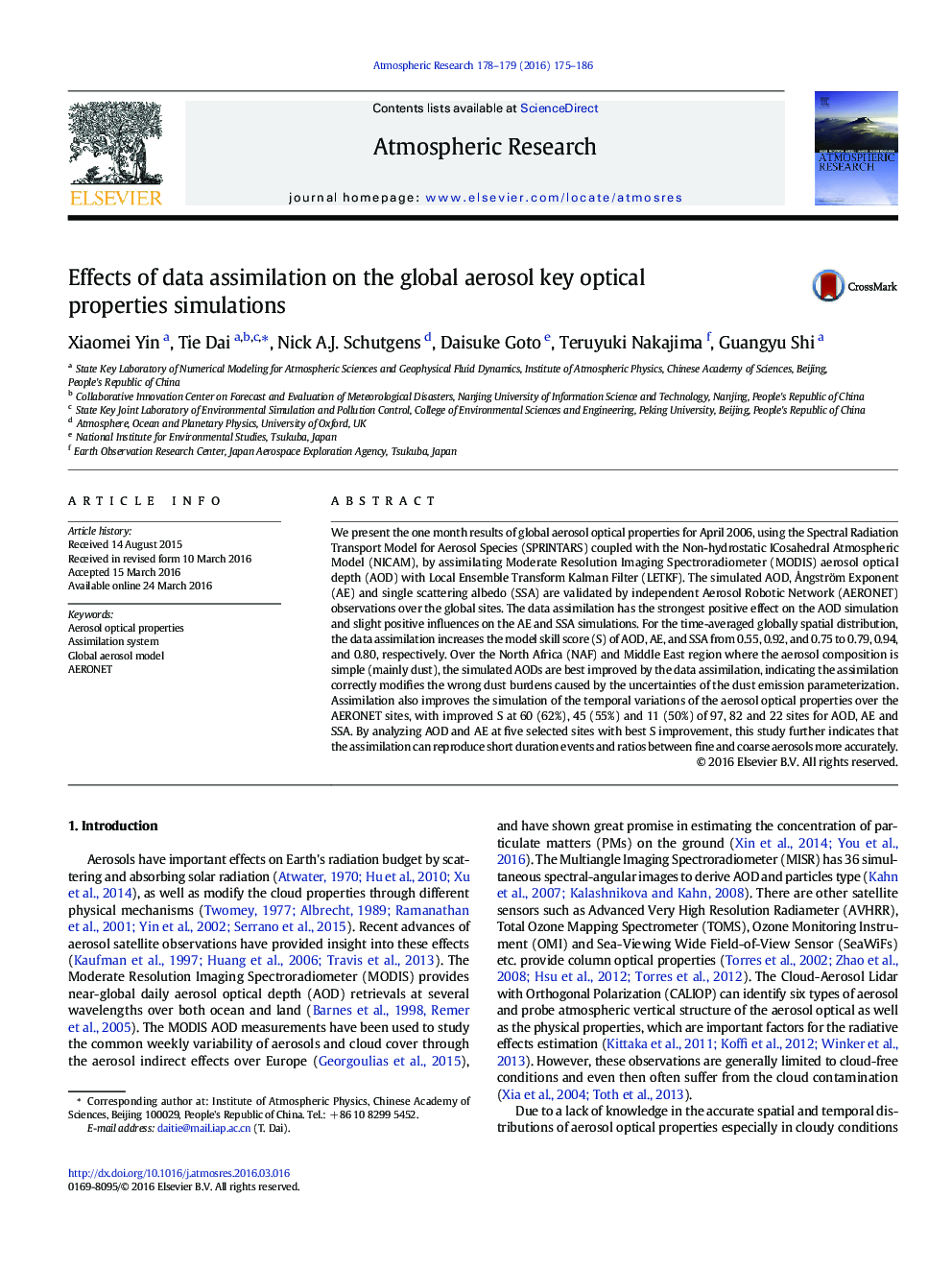| Article ID | Journal | Published Year | Pages | File Type |
|---|---|---|---|---|
| 6342990 | Atmospheric Research | 2016 | 12 Pages |
Abstract
We present the one month results of global aerosol optical properties for April 2006, using the Spectral Radiation Transport Model for Aerosol Species (SPRINTARS) coupled with the Non-hydrostatic ICosahedral Atmospheric Model (NICAM), by assimilating Moderate Resolution Imaging Spectroradiometer (MODIS) aerosol optical depth (AOD) with Local Ensemble Transform Kalman Filter (LETKF). The simulated AOD, Ã
ngström Exponent (AE) and single scattering albedo (SSA) are validated by independent Aerosol Robotic Network (AERONET) observations over the global sites. The data assimilation has the strongest positive effect on the AOD simulation and slight positive influences on the AE and SSA simulations. For the time-averaged globally spatial distribution, the data assimilation increases the model skill score (S) of AOD, AE, and SSA from 0.55, 0.92, and 0.75 to 0.79, 0.94, and 0.80, respectively. Over the North Africa (NAF) and Middle East region where the aerosol composition is simple (mainly dust), the simulated AODs are best improved by the data assimilation, indicating the assimilation correctly modifies the wrong dust burdens caused by the uncertainties of the dust emission parameterization. Assimilation also improves the simulation of the temporal variations of the aerosol optical properties over the AERONET sites, with improved S at 60 (62%), 45 (55%) and 11 (50%) of 97, 82 and 22 sites for AOD, AE and SSA. By analyzing AOD and AE at five selected sites with best S improvement, this study further indicates that the assimilation can reproduce short duration events and ratios between fine and coarse aerosols more accurately.
Keywords
Related Topics
Physical Sciences and Engineering
Earth and Planetary Sciences
Atmospheric Science
Authors
Xiaomei Yin, Tie Dai, Nick A.J. Schutgens, Daisuke Goto, Teruyuki Nakajima, Guangyu Shi,
